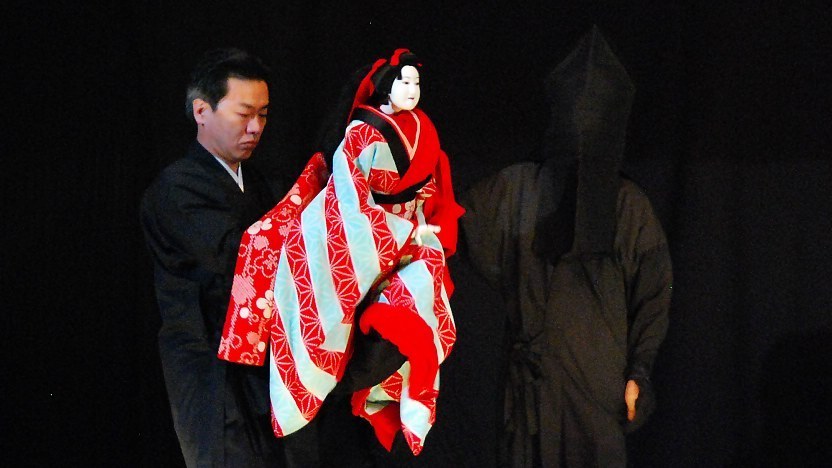Bunraku

Bunraku (文楽) is the traditional puppet theater of Japan. It started of as popular entertainment for the commoners during the Edo Period (1603-1868) in Osaka and evolved into artistic theater during the late 17th century. Along with noh and kabuki, it is recognized as a UNESCO Intangible Cultural Heritage.
What is it?
Bunraku puppets are about one-half life size and each is operated by three performers: a principal operator and two assistants. Strings are not used, but rather the puppeteers co-operate to maneuver the limbs, eyelids, eyeballs, eyebrows and mouths of the puppets, thereby producing life-like actions and facial expressions. The puppeteers are in full view of the audience, but are dressed in black to symbolize that they are to be taken as "invisible".
The story is narrated by a single person, who also speaks the voice of all the puppets, and therefore must have a diverse repertoire of vocal expressions to represent both genders and all ages. The pace of the narration is dictated by accompanying music played on the shamisen. It is delightful to watch the sophisticated puppets come to life as the performers create their intricate movements, synchronized with the narration and the music from the shamisen.
Bunraku and kabuki often depict stories based on adaptations of scripts with similar themes. Classic tragic love stories, heroic legends and tales based on historical events are popular.

Where to watch it?
Nowadays, bunraku is mostly performed in modern theaters with Western-style seats. A day's performance is usually divided into two segments (one in the early afternoon and one towards the evening), and each segment is further divided into acts. Tickets are usually sold per segment, although in some cases they are also available per act. They typically cost between 1500 and 6500 yen.
Below are some venues where bunraku can be watched:
Questions? Ask in our forum.




